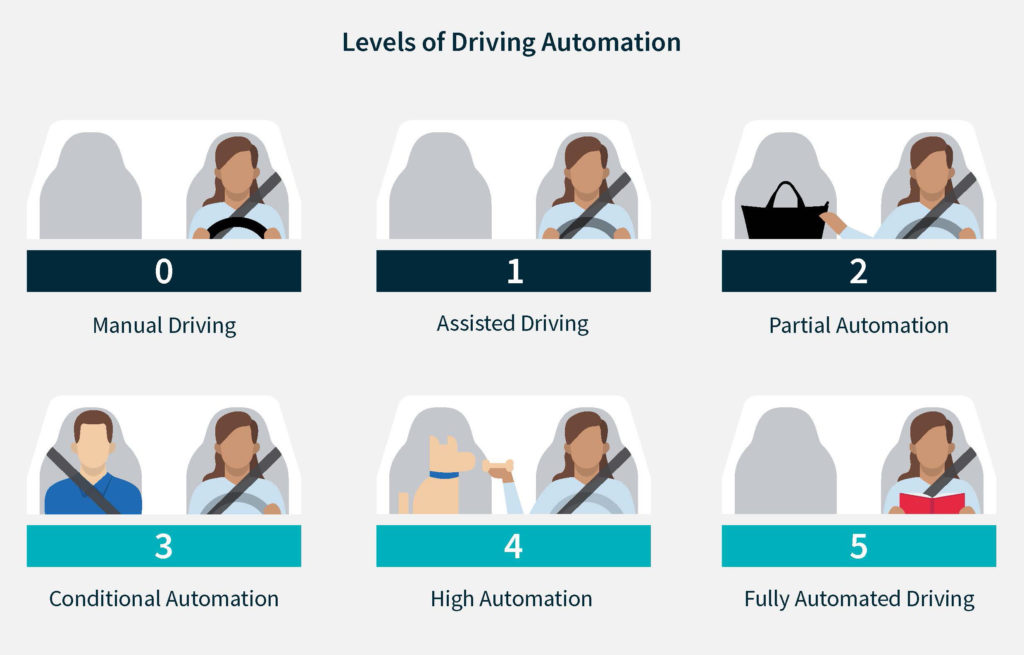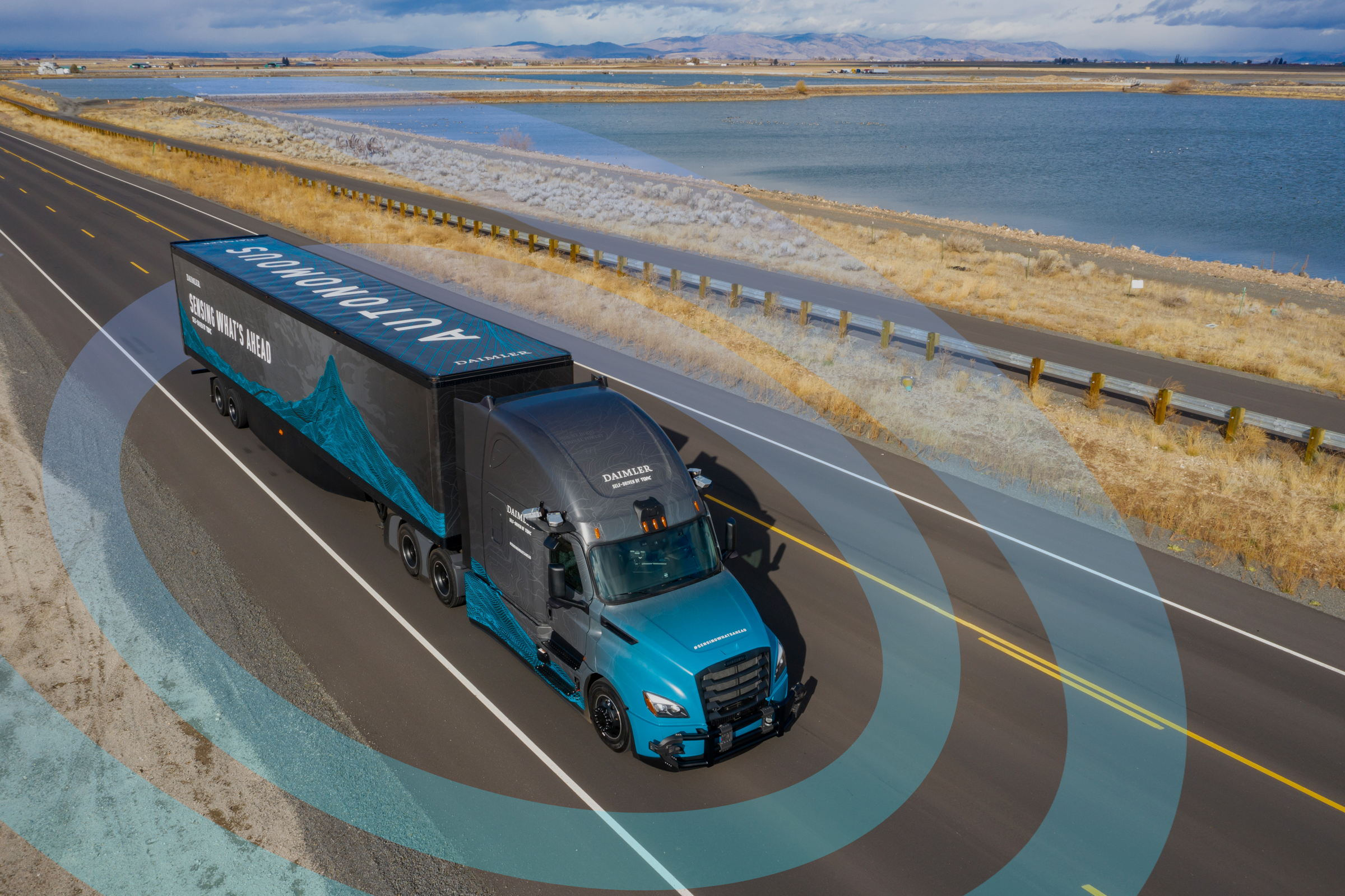Depending on how much time you spend watching the news, you may hear a lot about “self-driving vehicles,” and you may even hear speculation about how they can do everything from drive themselves to rescuing and altering the American economy. Whether they’re cars, semi-trucks, or shuttles, self-driving vehicles are often talked about in vast and varied terms. Those are lofty goals to set for any piece of technology, let alone one that is still in its infancy. Rather than focusing on the benefits of this technology, this article will define what we mean by “self-driving” or “autonomous” technology, as well as the several types of autonomous technology that are currently being developed.
An autonomous driving system is any system that is partially or fully capable of driving a vehicle without the aid, assistance, or intervention of a human driver. SAE International created the SAE Levels of Driving Automation in 2014 as a classification system for autonomous vehicles with the goal of providing greater clarity and transparency on the subject of autonomous technology for the benefit of everyone.

An Introduction to the Levels of Autonomy
Level 0: Manual Driving
At Level 0 Autonomy, the vehicle is incapable of autonomous driving and is solely controlled by a human driver. All driving decisions and movements are the responsibility of the driver. In the event of an emergency, a warning or help system may be employed to provide assistance or advice. Prior to the development and commercialization of advanced driver assistance features, all vehicles were Level 0 Autonomy. Even today, with technology pervading every aspect of our lives, the vast majority of vehicles are still Level 0 Autonomy.
Level 1: Assisted Driving
Level 1 Autonomy is characterized as follows: one aspect of the driving process is taken over in isolation, using data from sensors and cameras, but the driver retains entire control of the vehicle. When the driver activates the driving automation system, it can execute either longitudinal or lateral vehicle motion control, depending on the scenario. The driver must always keep an eye on the system and be prepared to take control of the vehicle if necessary. The development of Level 1 Autonomy and autonomous driving technology began in the late 1990s with the creation of the world’s first radar-controlled cruise control and the debut of lane-keep assist in 2008. These were the initial stages in releasing commercially viable autonomous technology for the masses. They were also the first steps to placing less on the driver and developing vehicles with enhanced active safety features.
Level 2: Partially Automated Driving
At this level, computers take on many of the driver’s responsibilities. Today, there are many commercially available vehicles capable of running at Level 2 Autonomy. Their technology makes them intelligent enough to combine speed and steering systems together by relying on multiple data sources, including cameras, radar, LiDAR, and GPS. However, a driver always must be present in the vehicle to take control of the vehicle in the event of an emergency, must keep a continual eye on the system, and best be ready to take over the delegated tasks if necessary. The driver simply must activate the autonomous driving system to use it.
Under specific scenarios, the driving automation system supports the driver with a portion of the active driving duties by steering the vehicle laterally and longitudinally through traffic flow. This complex form of cruise control combines directional, throttle, and brake operations. It uses sophisticated sat-nav data to autonomously brake for curves ahead, maintain a fixed distance from the car in front, and resume driving when traffic jams clear, all while the driver remains sitting. When the driver makes requests, the system will immediately disengage and allow the driver to resume control of the vehicle.
In the next part of this series, we will continue learning about the remaining Level 3 to Level 5 of autonomous driving. We will also discuss which level of autonomy Torc, a leader in the world of autonomous trucking companies, is pursuing and why.
For more information, read Torc’s Vehicle Safety Self-Assessment (VSSA) Report. It gives an overview of our safety culture, our technology, and describes how we are collaborating with industry experts to assure the safe development and commercialization of our autonomous driving systems for autonomous freight trucks.

